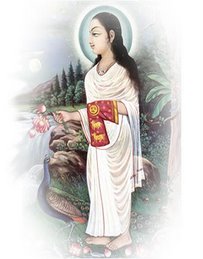Vedanta is based on Prasthana Trayi. Sources of knowledge in Prasthan trayi consist of:
Veda --------> Bhagwat Geeta ---------> Brahma Sutras
(UPNISHAD) ----->(18 CHAPTERS) -----> (555 APHORISM)
Based on Prasthana trayi different hermits gave there personal views.
The main Acharyas and there views are:
Shankaracharya’s (8th century) : Kevaladwaita
Ramanujacharya’s (1056-1137) : Visistadwaita
Madhvacharya’s (1199-1278) : Dwaitavad
Nimbarkacharya’s (13th century): Dwaitadwaitavad
Vallabhacharya’s (1481-1533) : Suddhadwaita
Out of all the views, Shankaracharya’s view was different from other Acharyas. Shankaracharya’s view was Nirgunvad. Were as Ramanujacharya’s, Madhvacharya’s, Nimbarkacharya’s and Vallabhacharya’s view was related to Vaishnava Sampradaya.
All the Acharyas has came from south. They were expert in Sanskrit language. Based on this they translated there view’s in to simple language so that a common man can understand it. This 5 were not only Acharyas but were saints. All this Acharyas bought Seriousness in philosophy, Devotion and Good/Pure thoughts.
Vedanta bases itself mainly upon three sets of texts, called Prasthana Trayi. These are the Upanishads (Sruti Prasthana), the Bhagavata Geeta (smriti Prasthana) and the Brahma sutras of Badarayana (Nyaya Prasthana).
Prasthana trayi is comprised of 3:
1) Shruti Prasthan
2) Smruti Prasthan
3) Nyaya Prasthan
Each can be classified as follows:
1) Shruti Prasthan:
Shruti means
1) That which is heard.
2) Revelation, as distinguished from smriti, tradition; infallible knowledge which was received by Brahma or by the great sages in the beginning of creation and which descends in disciple succession from them; the body of literature which was directly manifest from the Supreme Lord. This applies to the original four Vedas (also known as the nigamas) and the Upanishads.
There are 12 main Upanishads:
Aytreya
Kaushitki kaen
Chandogya
Eesh
Bruhdarnayak
Kath
Taitariya
Swetashter
Rigvediya
Saamavediya
Shukla Yajurvediya
Krishna Yajurvediya
2) Smruti Prasthan:
The term smriti refers to a specific collection of ancient Sanskritic texts as follows: the six or more Vedangas, the four Upavedas, the two Itihasas, and the 18 main Purana’s. In a general sense, smriti may refer to any text other than shruti (revealed scripture) that is revered as scripture within a particular sect. From the vast body of sacred literature, shastra, each sect and school claims its own preferred texts as secondary scripture, e.g., the Ramayana of Vaishnavism and Smartism, or the Tirumurai of Saiva Siddhanta.
3) Nyaya Prasthan:
The Nyaya is the basis of all Sanskrit philosophical studies. It is an introduction to all systematic philosophy. It is the preliminary course for a student of philosophy. You cannot understand the Brahma-Sutras of Sri Vyasa without knowledge of the Nyaya. A study of the Nyaya develops the power of reasoning or arguing. It renders the intellect sharp and subtle. You cannot make Vedantic enquiry without a sharp and subtle intellect.
Hence, we can say that the Vedas are totally based on the Prasthan trayi i.e. Veda, Bhagwat Geeta and Brahma Sutras. This was according to Shankaracharya, Ramanujacharya, Nimbarkacharya, and Madhvacharya. And not by Shri Vallabhacharyaji.

Pustimarg-The Path Of Grace a Religious Blog is licensed under Creative Commons Attribution-Noncommercial-No Derivative Works 2.5 India License.
16 July 2007
Subscribe to:
Post Comments (Atom)


.jpg)
No comments:
Post a Comment